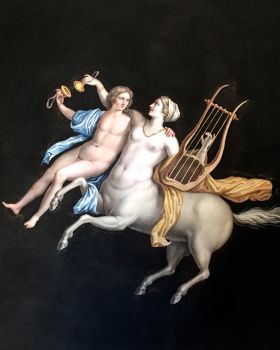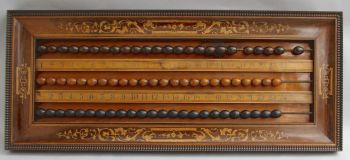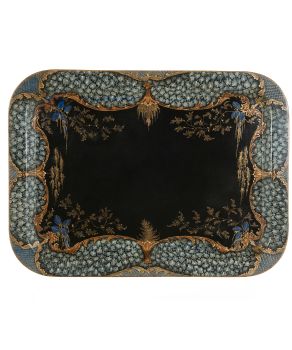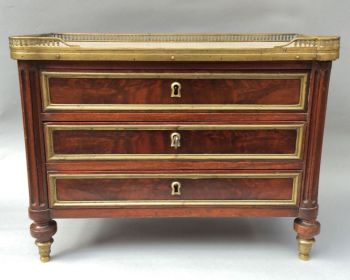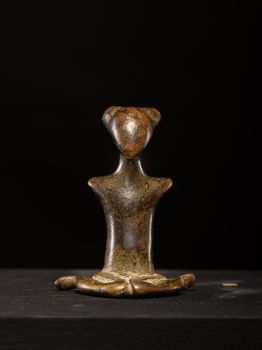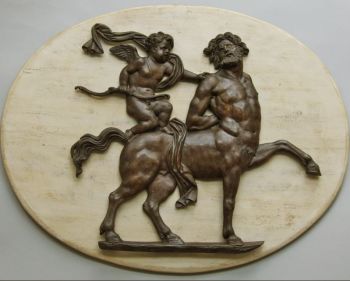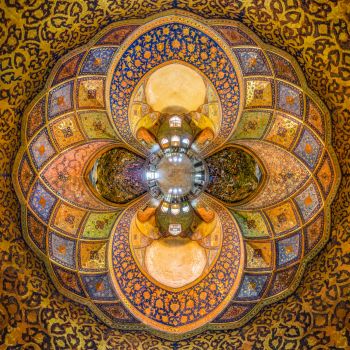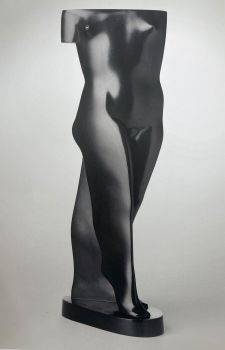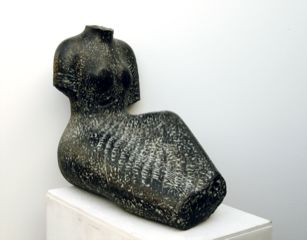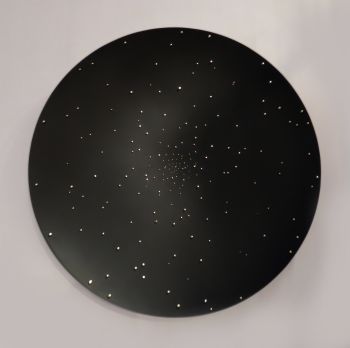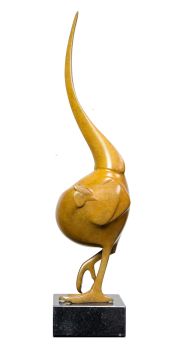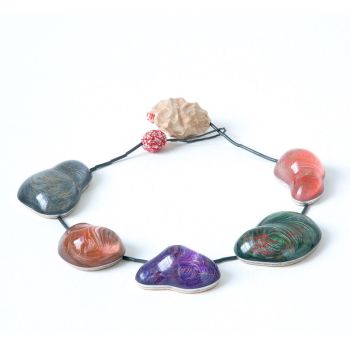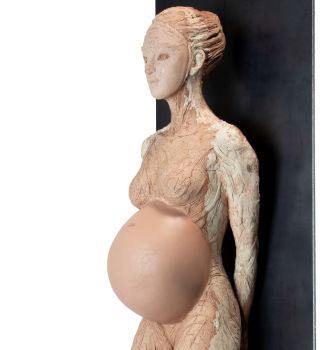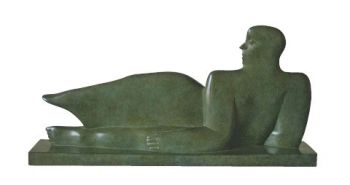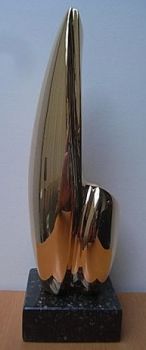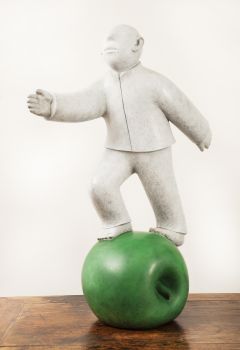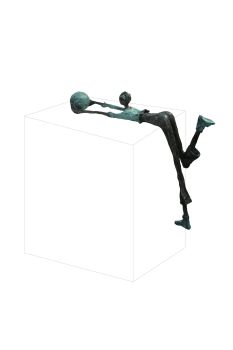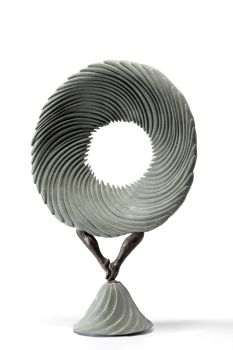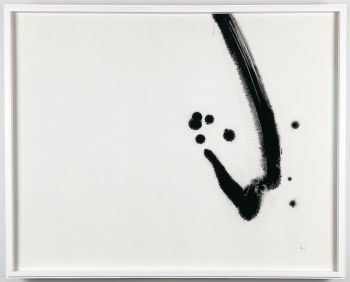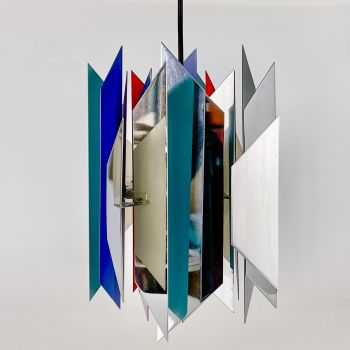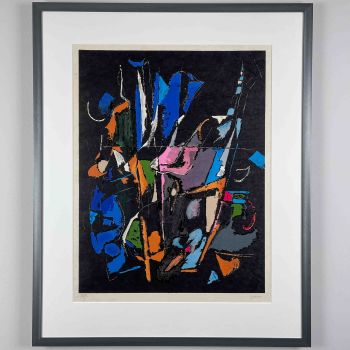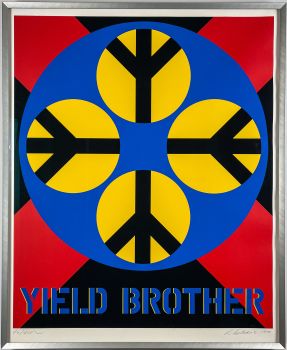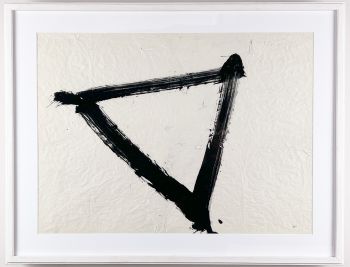A multicoloured enameled copper deep plate – 1960’s or 1970’s 1960 - 1979
Saara Hopea
MetalCobre rojoEsmalte
4 cm, ø 21 cm
ConditionVery good
€ 825
Van Kerkhoff Art
- Sobre la obra de arteA multicoloured enameled copper deep plate, with spot textured areas. Handmade by Saara Hopea in her own workshop in the 1960’s or 1970’s. The plate is signed on the reverse by the artist in diamondpen: Saara.
Saara Hopea started making these copper enameled plates in 1960 when she lived in New York City. The enameling on copper she learned from her husband Oppi Untracht who taught enameling at the Brooklyn Museum Art school. In a very short time she mastered this craft and in the early 1960’s several of her plates were bought by the Museum of Modern Art. The copper plates Saara Hopea used were hand lathe spun by Abram Bender in New York.
Saara’s enamel work was interupted between 1963 and 1967 when she lived in India and Nepal. When she moved back to Finland she established a new workshop in Porvoo. She kept making these enameled plates by hand until 1980.
About Saara Hopea
Saara Elisabet Hopea (Porvoo 1925 – Porvoo 1984), a prominent Finnish designer renowned for her innovative creations in art-glass, furniture, and jewelry, left an indelible mark on the world of design during her lifetime. Born in 1925 in the scenic town of Porvoo, situated in the southern region of Finland, Hopea’s artistic prowess and unwavering dedication to her craft propelled her to international recognition.
The daughter of Ossian Hopea and Lempi Westerlund, who owned a reputable goldsmithing company, Hopea was exposed to the world of design from an early age. After completing her secondary education, she honed her skills at the Interior Design Department of the Central School of Art and Design, now known as the esteemed Aalto University of Art and Design.
In 1946, Hopea proudly graduated, armed with a wealth of knowledge and a burning passion for design. She embarked on her professional journey as an illustrator before joining the lighting factory of Taito Oy, a renowned establishment under the guidance of celebrated designer Paavo Tynell.
However, it was in the early 1950s that Saara Hopea found her true calling when she delved into the realm of glass design. With an innate talent and an insatiable curiosity, she joined the Nuutajärvi glass factory, where she had the privilege of working alongside the esteemed artistic director, Kaj Franck.
In 1959, tragedy struck as Hopea’s father passed away, and she courageously took the helm of the family business, Ossian Hopea Oy. As the artistic director from 1959 to 1960 and later from 1967, she left an indelible mark on the company’s direction and was responsible for numerous iconic jewelry designs.
Her creative journey took an unexpected turn in 1960 when she married Oppi Untracht, an accomplished American goldsmith, photographer, and writer. Together, they embarked on an adventurous life that led them to reside in New York City, Nepal, and India, before eventually settling in Porvoo in 1967.
Hopea’s exceptional designs earned her widespread acclaim and accolades. Her glass creations were honored with silver medals at the esteemed Milan Triennials in both 1954 and 1957, showcasing her mastery of the craft on an international stage. She also received notable recognition closer to home, including the prestigious Porvoo City Culture Prize in 1981 and the State Arts and Crafts Prize in 1982.
Today, Saara Hopea’s impact resonates globally, with her works showcased in renowned institutions. The British Museum in London boasts an impressive collection of 28 of her pieces, while the Museum of Modern Art (MoMA) in New York proudly displays 11 of her distinctive creations.
Although she left this world in 1984, Hopea’s artistic legacy continues to inspire and captivate design enthusiasts. Her retrospective exhibition at the Museum of Arts and Crafts in Helsinki in 1987 served as a testament to her enduring influence, ensuring her innovative designs remain cherished and celebrated for generations to come.
Marked
Marked in diamondpen underneath the base: Saara
Execution
Made in her own workshop: 1960-1963; 1967-1979
Condition
This plate is in very good vintage condition. No chips, no dents. some minor scratches.
Literature
Oppi Untracht – Saara Hopea-Untracht: her life and work. P. 202-213
Dimensions
Height 4,5 cm
Diameter 21 cm
Weight 426 grams - Sobre el artista
Saara Hopea tuvo una carrera prolífica en varios campos del diseño, dejando una huella significativa en el panorama artístico finlandés de la década de 1950. Su viaje comenzó en el ámbito del diseño de muebles, donde perfeccionó sus habilidades desde 1946 hasta 1948. En busca de nuevas oportunidades, unió fuerzas con la renombrada compañía del orfebre Paavo Tynell, donde trabajó hasta 1952.
Durante este tiempo, contribuyó a la cristalería Nuutajärvi, donde sus creaciones se convirtieron en una brillante encarnación de la estética minimalista que definió el estilo finlandés en la década de 1950, influenciada por los principios de la filosofía de diseño Bauhaus. En particular, después de la muerte de su padre en 1948, asumió la tarea de diseñar cubiertos para su tienda en Porvoo.
Un punto de inflexión en la vida de Hopea ocurrió cuando se casó y se mudó a Nueva York con su esposo. Fue aquí donde se embarcó en un nuevo camino artístico, explorando el ámbito del trabajo del esmalte. A través de su experimentación con esmaltes transparentes sobrecocidos sobre cobre, logró resultados notables que otorgaron a sus piezas un aspecto espontáneo y pictórico, caracterizado por colores vibrantes y una profundidad notable. Sus exquisitas creaciones de esmalte llegaron a manos de clientes exigentes a través de tiendas exclusivas.
La sed de conocimiento e inspiración artística de la pareja los llevó a embarcarse en un extraordinario viaje a través de Nepal y la India, que duró cuatro años. Durante este tiempo, se sumergieron en el estudio, la fotografía y la colección de orfebrería y joyería local. En 1997, su esposo, profundamente influenciado por sus experiencias, publicó "Joyería tradicional de la India", un testimonio de su exploración y apreciación del rico patrimonio artístico de la región. En 1967, regresaron a Porvoo, donde los esfuerzos artísticos de Hopea abarcaron una amplia gama de disciplinas, incluida la orfebrería, el diseño textil y el esmaltado.
El impacto del talento y el arte de Saara Hopea se extiende más allá de las fronteras de Finlandia. El Museo Británico cuenta con una colección de 28 de sus obras, mientras que el Museo de Arte Moderno tiene 11 artículos preciosos, testimonio de su legado perdurable. En 1988, su marido publicó un relato completo de su vida y obra titulado "Saara Hopea-Untracht: Vida y obra", que arroja luz sobre el notable viaje artístico de esta tranquila visionaria escandinava.
¿Está interesado en comprar esta obra de arte?
Artwork details
Related artworks
- 1 - 3 / 3
Børge Mogensen
Teak wood “dropleaf” desk – Søborg Møbler, Denmark circa 19551950 - 1960
Preis auf AnfrageVan Kerkhoff Art
1 - 4 / 24Unbekannter Künstler
A white jade ‘Lotus Seedpod and Bug’ carving, Qing dynasty, 18th century18th century
Preis auf AnfrageMenken Works of Art
Unbekannter Künstler
Two Centaurs, France or Italylate 18th
Preis auf AnfrageRobert Schreuder Antiquair
Unbekannter Künstler
Chinese gilt bronze censer, Xuande mark, 18th century, Qing dynasty18th century
Preis auf AnfrageMenken Works of Art
1 - 4 / 24- 1 - 4 / 24
- 1 - 4 / 12

































